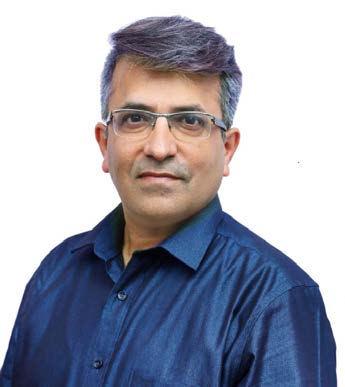Dermatologist
DERMAL FILLERS

Dr Amit Luthra Consultant Dermatologist Ishira Skin Clinic 16 years in practice
Dr Amit Luthra is a Dermatologist from Delhi with special interest in aesthetics. He completed his MBBS from the Armed Forces Medical College, Pune, and DNB-Dermatology & Venereology from Delhi. He is a member of European Academy of Dermatology and Venereology; Indian Association of Dermatologists, Venereologists and Leprologists; and Cosmetic Dermatology Society of India.
Know more from Dr Luthra about dermal fillers:
Who is a good candidate for dermal fillers? How do you approach your patient?
Candidates for dermal fillers could be those who require a problem-solution approach or who are looking for enhancements.A good candidate would be one who has good skin elasticity with mild to moderate loss of volume.The approach has to be clinical – knowing the client’s history followed by a global examination in static position as well as in animation covering all the profiles. Use of photographic tools and the help of special software could serve as add-ons.
How can best results be derived from this treatment? Tell us about the technique.
Best results are an outcome of proper alignment, using the right amount of fillers, specific product usage considering that there are different fillers for varied indications, and injection techniques.The timeframe depends on the solution required, with results visible immediately post procedure and going up to a couple of weeks.
Techniques are varied with primarily injections with a needle on the bone and superficially and subcutaneously with a cannula. Patterns of delivery of injections can be a linear thread, boluses, fanning, cross hatching and fanning. Sittings are again a function of the problem-solution or enhancement with single sitting sessions also being possible. However, it is always advisable to go slow and space out sessions at gaps of two to three weeks.
What is the recovery time for a patient, and what does the post-treatment care involve?
Patients are usually informed about expecting some swelling and redness for up to 48 hours post the procedure. In some instances, this could extend to a week or two, especially in areas such as the lips and the under eyes. Bruising may occur at times, in the case of which, it may take two to three weeks to settle down. Post treatment care involves ensuring the treated area is kept clean, avoiding manipulating it, and staying hydrated.
Any contraindications involved? Is there anything the patient must not do after the treatment?
Any active infection in the treatment area is a contraindication. Uncontrolled diabetes, autoimmune disorders, and immunosuppression can be relative contraindications.
Patients are usually asked to avoid manipulation of the treatment area, extreme heat, and alcohol.They should avoid parlour services such as facials for a week and treatments that may involve machines such as radiofrequency and focused ultrasound for a month (this can be relative depending on the site treated and the level of injections).
Tell us about a challenging case study that you have dealt with for this treatment.
Rather, the two most challenging cases were ones that involved extreme fat loss from the face. In one of them –a 22-year-old girl – fat loss was from virtually the complete face resulting in a gaunt and old look.This was corrected by a series of treatments for the full face and she visits us annually for touch-ups. In the other case, a 45-year-old lady had undergone fat transfer for the face, which went wrong and ultimately was left with a prominent asymmetric face.This was further corrected with fillers. Approaching these two cases were challenging, and with the outcome matching the patients’ expectations.These were probably among the most successful and satisfying.